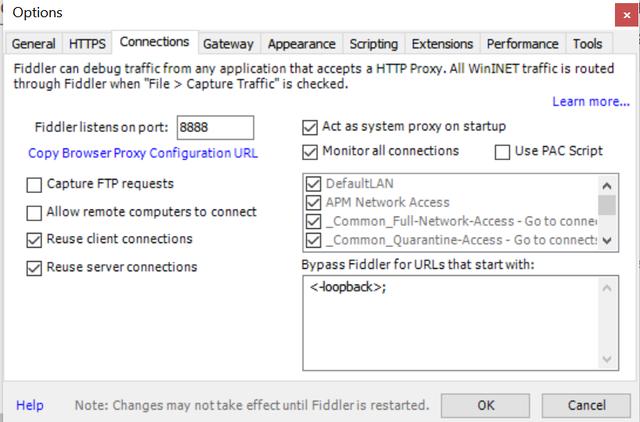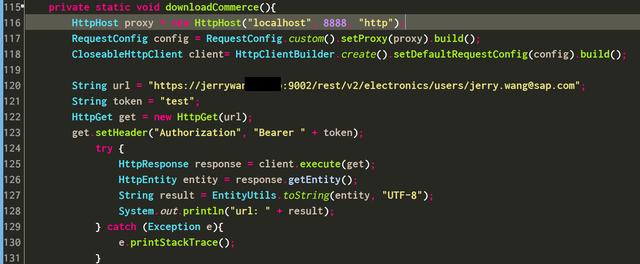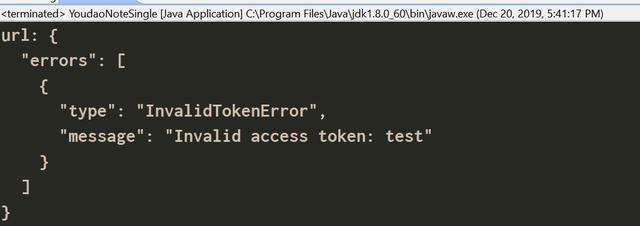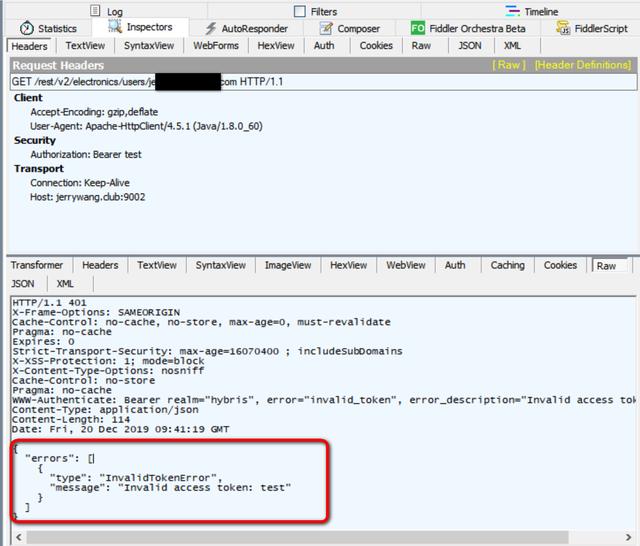我们使用Java的RestTemplate或者Apache的HTTPClient编程的时候,经常遇到需要跟踪Java
代码发送的HTTP请求明细的情况。和javascript代码在浏览器里发送请求可以通过Chrome开发者工具方便地跟踪一样,对于Java代码发送的网络请求,我们也可以使用工具Fiddler来监控。
打开Fiddler,在connections面板里找到Fiddler监听的端口号8888:

如果是使用Apache的HTTPClient进行网络请求发送,代码如下:

使用HttpHost设置请求代理:
private static void downloadCommerce(){HttpHost proxy = new HttpHost("localhost", 8888, "http");RequestConfig config = RequestConfig.custom().setProxy(proxy).build();CloseableHttpClient client= HttpClientBuilder.create().setDefaultRequestConfig(config).build();String url = "https://jerrywang.com:9002/rest/v2/electronics/users/jerry.wang@sap.com";String token = "test"; HttpGet get = new HttpGet(url); get.setHeader("Authorization", "Bearer " + token); try { HttpResponse response = client.execute(get); HttpEntity entity = response.getEntity(); String result = EntityUtils.toString(entity, "UTF-8"); System.out.println("url: " + result); } catch (Exception e){ e.printStackTrace(); }}执行Java应用,然后到Fiddler里,看到了监控到的HTTP请求各种明细,比如Java代码里硬编码的OAuth 2的认证token test:

Java代码收到的服务器端返回的错误消息:

这个错误消息在Fiddler里当然也是可以看到的:

在这种场景里,Fiddler扮演的就是类似Chrome开发者工具的角色。






)



)





connectionstring)


...)